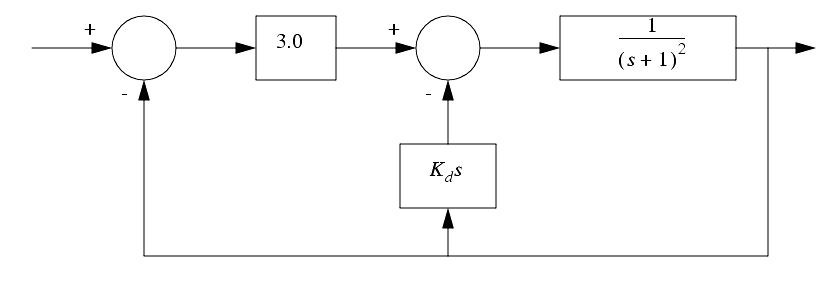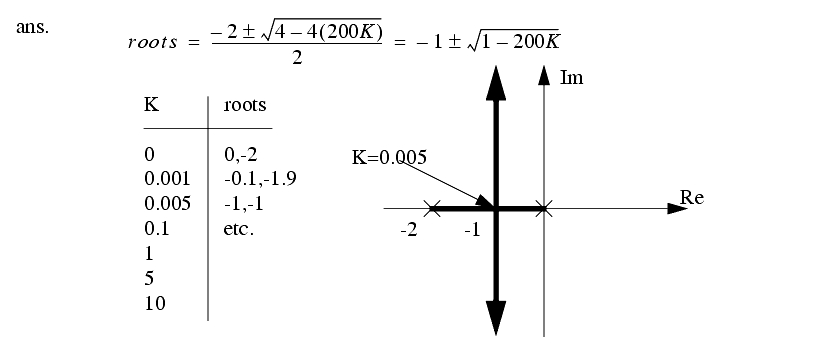7.4 PRACTICE PROBLEMS
������������2. Simplify the block diagram below.

3. Given the transfer function below, and the input `x(s)', find the output `y(t)' as a function of time.

4. Find the steady state error when the input is a ramp with the function r(t) = 0.5t. Sketch the system error as a function of time.

5. Simplify the following block diagram.

6. Given the block diagram below, select a system gain K that will give the overall system a damping ratio of 0.7 (for a step input). What is the resulting undamped natural frequency of the system?

7. What is the transfer function for a second order system that responds to a step input with an overshoot of 20%, with a delay of 0.4 seconds to the first peak?
8. Draw a detailed root locus diagram for the transfer function below. Be careful to specify angles of departure, ranges for breakout/breakin points, and gains and frequency at stability limits.

9. Draw the root locus diagram for the system below. specify all points and values.

10. Draw the root locus diagram for the transfer function below,

11. Draw the root locus diagram for the transfer function below,

12. The block diagram below is for a motor position control system. The system has a proportional controller with a variable gain K.

a) Simplify the block diagram to a single transfer function.

b) Draw the Root-Locus diagram for the system (as K varies). Use either the approximate or exact techniques.

c) Select a K value that will result in an overall damping coefficient of 1. State if the Root-Locus diagram shows that the system is stable for the chosen K.

13. Draw a Bode Plot for either one of the two transfer functions below.

14. The block diagram below is for a servo motor position control system. The system uses a proportional controller.
a) Convert the system to a transfer function.

b) draw a sketch of what the actual system might look like. Identify components.
15. Given the system transfer function below.

a) Draw the root locus diagram and state what values of K are acceptable.
b) Select a gain value for K that has either a damping factor of 0.707 or a natural frequency of 3 rad/sec.
c) Given a gain of K=10 find the steady state response to an input step of 1 rad.